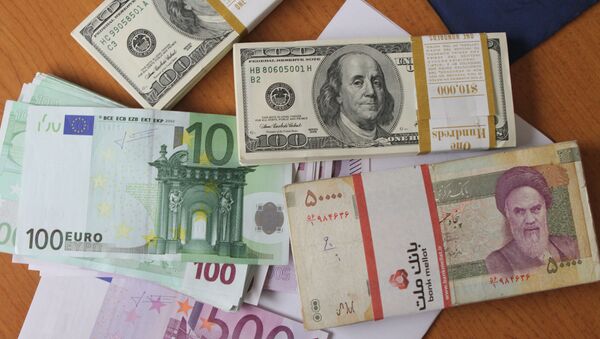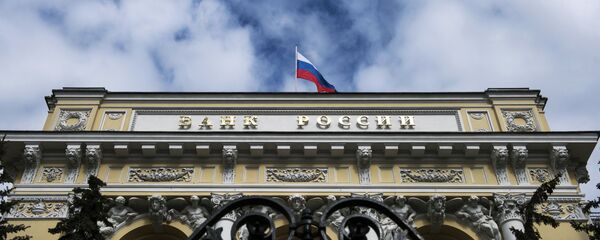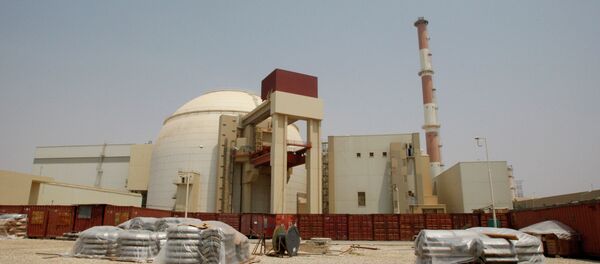"Iran is emerging from years of sanctions, the quality of banking services there has declined and Russian players can enter the market with interesting products for business and the public," Anatoliy Aksanov of Russia's Association of Regional Banks told Izvestiya.
The newspaper reported that the two countries' central banks recently held talks on the management of closer financial cooperation, and ten of Russia's largest banks are preparing financial services for the Iranian market.
Former President of the Russia-Iran Friendship Society Bahram Amirahmadiyan told Sputnik Persian that banking cooperation between Russia and Iran has a long history.
"This is really a very important topic, particularly in the context of trading and economic links between Russia and Iran. Even under the Shah, before the 1979 Islamic revolution, Russian-Iranian banking cooperation was very active. There was even a joint bank which conducted trade operations," he explained.
In 1924 two bilateral institutions were set up, the Russian-Persian Commercial Bank and the Russian-Persian Trade Company.
"After the 1979 that bank, along with many other joint banks, was closed, and bilateral transactions stopped," Amirahmadiyan explained.
The volume of bilateral trade between Russia and Iran is currently four to five billion dollars, which is conducted using dollars or euros, and mostly through intermediate countries such as Cyprus or the UAE.
Russia's trade representative in Iran Andrey Lugansky told Rossiyskaya Gazeta that following the lifting of sanctions, many Iranian companies conducting business through overseas subsidiaries will return their business to Iran and conduct their trade directly.
"We want to carry out all our trade operations in our national currencies, (although) this issue has not been resolved yet," Amirahmadiyan said.
"Of course, the prospect of Russian banks opening in Iran is very attractive and important because it can widen and improve our economic cooperation. At the moment, all banking operations between Russia and Iran are carried out in dollars or euros. It's very inconvenient, because all these operations are controlled either by the EU or US central banks."
"I also think that the Russian ruble can strengthen a lot on the Iranian currency market, and become a very attractive currency. There currently aren't any Russian banks in Iran, and the Russian currency is not very well known on the market. When Russian banks begin to operate in Iran, there will be more currency operations and the ruble will strengthen. I hope the same will happen to the Iranian rial in Russia. That's why we are waiting impatiently for this initiative to go ahead," Amirahmadiyan said.
A single Iranian bank currently operates in Russia, called "Mir Business Bank." The bank is a subsidiary of Bank Melli Iran and 70 percent of its customers import and export goods such as grain, timber and food products between Russia and Iran.
According to official figures from Russia's Federal Customs Service, Russian-Iranian trade as a proportion of Russia's international trade increased from 0.2 to 0.4 percent in the first half of this year, following the partial lifting of sanctions. Between January and June, the total turnover of trade between the two countries was $923.7 million.
"Iranian businessmen and entrepreneurs often tell me that the key problem in the way of increasing the volume of trade between the two countries is the lack of a single joint banking mechanism. This is a very valuable and rational initiative from Russian banks, and I am sure it will succeed in practice. The Russian-Iranian Chamber of Commerce is actively working on opening a joint Russian-Iranian bank," Amirahmadiyan said.
In January the US and EU announced the lifting of all economic and financial sanctions against the Islamic Republic associated with its nuclear program, enabling Tehran to access previously frozen assets, use international financial messaging services such as SWIFT, and sell oil and other raw materials to EU countries.
While Russian firms are keen to increase trade with Iran, their Western counterparts still appear fearful of repercussions from the authorities.
While they have lifted some sanctions following the July 2015 nuclear agreement between Tehran and the 5+1 countries, the US and EU continue to impose some sanctions against Iran associated with its ballistic missile program, which Tehran maintains has purely defensive purposes.
In July the US House of Representatives blocked a deal between Boeing and Iran Air to supply 118 passenger planes to replace Iran's ageing fleet. The move also prevents a similar deal between Iran Air and French manufacturer Airbus, since its planes use some parts from Boeing. The US representatives claimed Iran could modify the jets and use them for military purposes.






